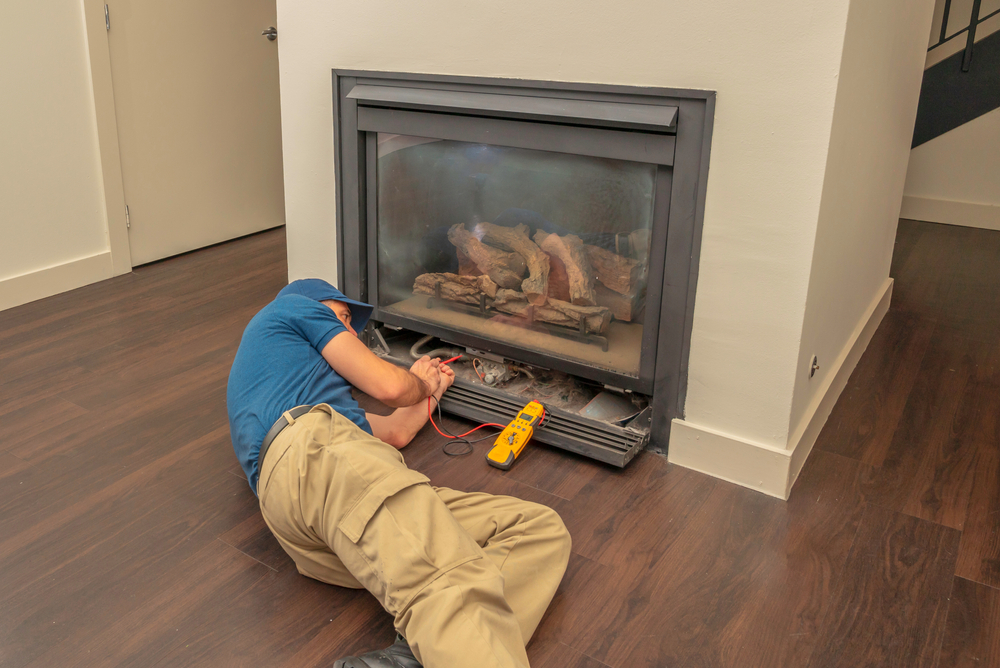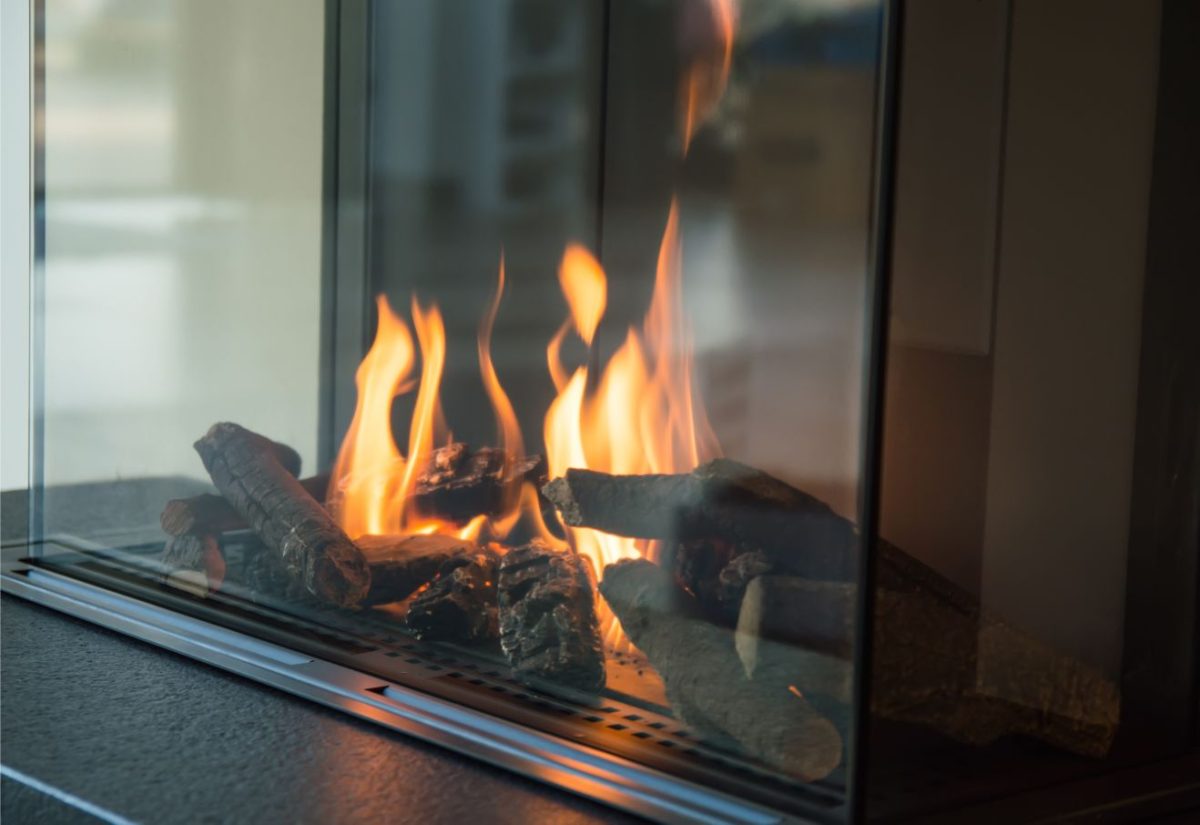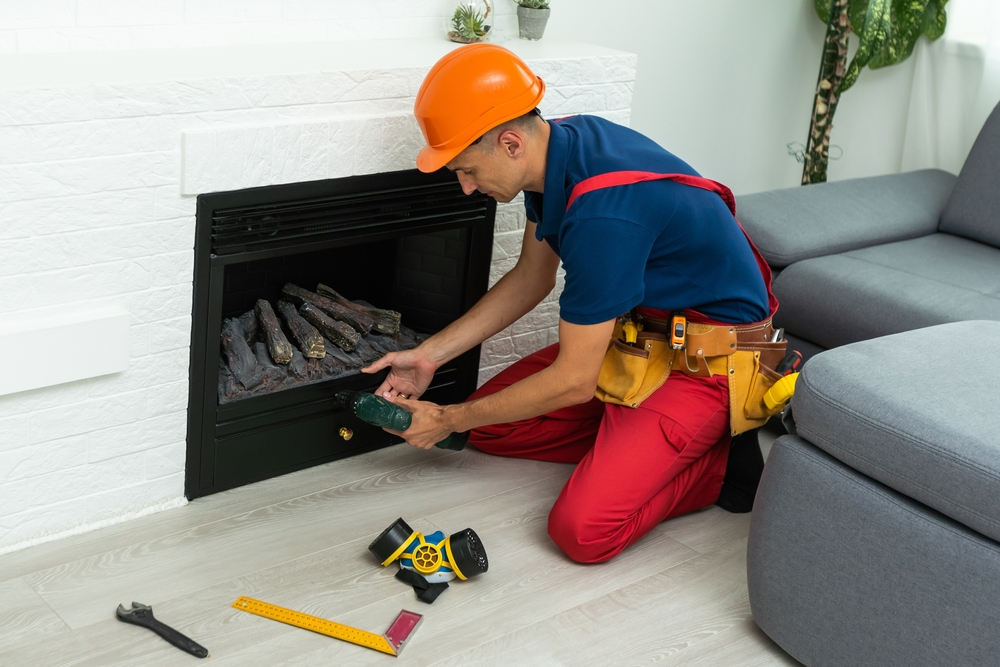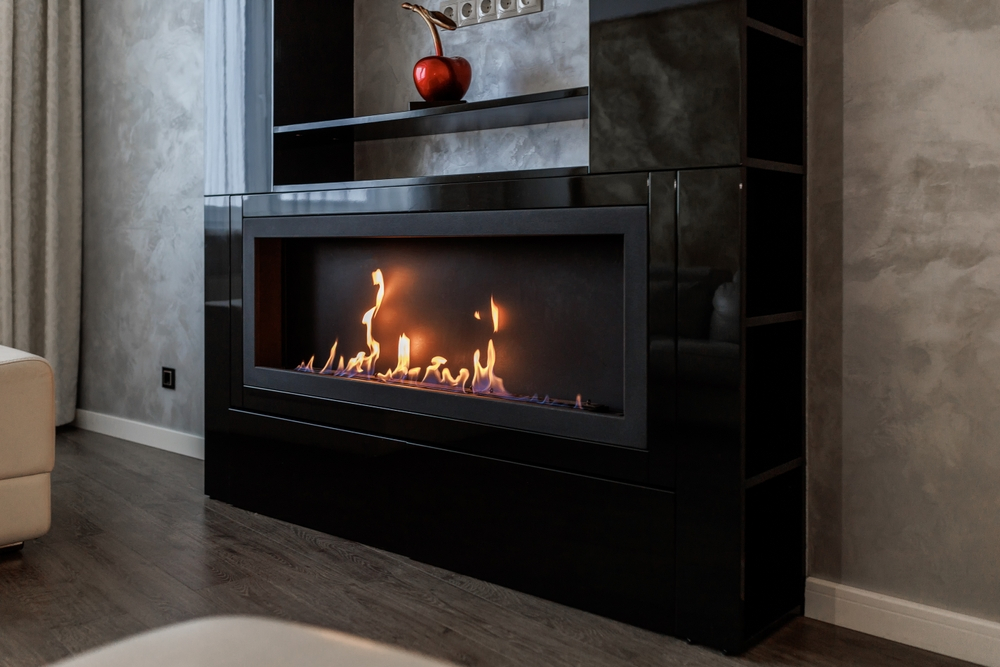Gas Fireplace Cleaning Minneapolis
It can get cool in the winter or evening in Minneapolis, Minnesota.
Did you know that your gas fireplace needs to be serviced every year to ensure safe operation?
If you are like most people you were unaware of this necessity.
It is recommended that a licensed service technician inspects your gas fireplace annually to ensure the safe, efficient, and reliable operation of your gas unit.
For the safety of your home, it is recommended that both gas fireplaces and wood-burning fireplaces including stove inserts and pellet stoves be serviced once a year. Any time you have a live-fire burning in your home you want to make sure everything is performing at optimal efficiency for safety and reliability.
Another thing to consider is that there is a higher risk of having a carbon monoxide issue due to parts wearing out if you do not get your fireplace inspected by a professional every year.
There are a lot of moving parts in gas fireplaces. Servicing those parts to make sure they have been adjusted appropriately and identifying when they need to be replaced will give you peace of mind when using your appliance. Those parts last longer when they are serviced on an annual basis saving you money in the long run.
If you don’t use your gas unit often there is a possibility of bugs and spiders in the venting living and spinning webs. This can cause issues with proper venting and can also be a factor in causing a carbon monoxide issue.
So even though gas fireplaces don’t cause creosote build up like in a wood-burning fireplace there can still be issues with parts needing to be replaced or adjusted. A yearly inspection is the best solution to keeping your family safe from carbon monoxide leaks due to unexpected failure of worn-out parts.
We offer gas fireplace repair and cleaning. Chimcare started years ago as a family-based business. Since then we have grown from one chimney sweep to a crew of licensed technicians offering you home solutions from fireplace inspection, cleaning, installation, and other related services.
Simply call to schedule an inspection in Minneapolis for gas fireplace cleaning which will include the safety inspection. This service will give you peace of mind, save you money, and could save your life.
Facts about Minneapolis
| Jan | Feb | Mar | Apr | May | Jun | |
|---|---|---|---|---|---|---|
| Average high in ºF | 24 | 29 | 41 | 58 | 69 | 79 |
| Average low in ºF | 8 | 13 | 24 | 37 | 49 | 59 |
| Days with precipitation | 8 | 7 | 11 | 9 | 11 | 13 |
| Hours of sunshine | 140 | 166 | 200 | 231 | 272 | 302 |
| Av. precipitation in inch | 0.90 | 0.77 | 1.89 | 2.66 | 3.36 | 4.25 |
| Av. snowfall in inch | 12 | 8 | 10 | 3 | 0 | 0 |
| Jul | Aug | Sep | Oct | Nov | Dec | |
|---|---|---|---|---|---|---|
| Average high in ºF | 83 | 80 | 72 | 58 | 41 | 27 |
| Average low in ºF | 64 | 62 | 52 | 40 | 26 | 12 |
| Days with precipitation | 10 | 10 | 9 | 8 | 8 | 8 |
| Hours of sunshine | 343 | 296 | 237 | 193 | 115 | 112 |
| Av. precipitation in inch | 4.04 | 4.30 | 3.08 | 2.43 | 1.77 | 1.16 |
| Av. snowfall in inch | 0 | 0 | 0 | 1 | 9 | 12 |
Source: https://www.usclimatedata.com/climate/minneapolis/minnesota/united-states/usmn0503
Demographics
Dakota tribes, mostly the Mdewakanton, were permanent settlers near their sacred site St. Anthony Falls.[22] New settlers arrived during the 1850s and 1860s from New England, New York, Bohemia[83] and Canada, and, during the mid-1860s, immigrants from Finland, Sweden, Norway and Denmark began to call Minneapolis home. Migrant workers from Mexico and Latin America interspersed.[84] Other immigrants came from Germany, Poland, Italy, and Greece. Central European immigrants settled in the Northeast neighborhood, still known for its Czech[85] and Polish cultural heritage. Jews from Central and Eastern Europe, and Russia began arriving in the 1880s and settled primarily on the north side before moving to western suburbs in the 1950s and 1960s.[86] Two groups came for a short while during US government relocations: Japanese during the 1940s, and Native Americans during the 1950s. In 2013, Asians were the state’s fastest growing population. Chinese, Japanese and Filipinos came in the 1970s, Hmong, Lao, Cambodian and Vietnamese in the 1970s and 1980s, and people from Tibet, Burma and Thailand came in the 1990s and 2000s.[87] The population of people from India doubled by 2010.[88] After the Rust Belt economy declined during the early 1980s, Minnesota’s black population nearly tripled in less than two decades, a large fraction hailing from cities such as Chicago and Gary, Indiana.[89] Beginning in the 1990s, a sizable Latino population arrived, along with immigrants from the Horn of Africa, especially Somalia,[90] however immigration of fourteen hundred Somalis in 2016, slowed to forty eight in 2018 under President Trump.[91] In 2015, Brookings characterized Minneapolis as a re-emerging immigrant gateway with about 10 percent foreign-born residents.[92] As of 2019, African Americans make up about one fifth of the city’s population.
The US Census Bureau estimates the population of Minneapolis to be 429,606 as of 2019, a 12.3 percent increase since the 2010 census.[5] The population grew until 1950, when the census peaked at 521,718, and then declined until about 1990 as people moved to the suburbs.
As of 2015, Minneapolis had 4 percent adult LGBT residents, roughly the same as the national average.[93] In line with other cities, Human Rights Campaign gave Minneapolis its highest possible score in 2019.[94]
Racial and ethnic minorities in the city lag behind white counterparts in education, with 15 percent of blacks and 13 percent of Hispanics holding bachelor’s degrees compared to 42 percent of the white population. The standard of living is rising, with incomes among the highest in the Midwest, however, median household income among minorities is below that of whites by over $17,000. As of 2015, the poverty rate gap between blacks and whites was the highest in the US.[95]
Source: https://en.wikipedia.org/wiki/Minneapolis#Demographics
Gas Fireplace FAQs – Minneapolis, Minnesota
How often should my gas fireplace be inspected and cleaned?
Experts recommend a professional inspection and cleaning at least once per year—ideally before the heating season—to remove dust and soot, inspect venting, and confirm safe combustion in accordance with NFPA standards.
What routine maintenance can I do myself?
You can vacuum the firebox, wipe the glass, dust logs, and test carbon‑monoxide detectors. Deeper tasks—such as burner cleaning, vent checks, or gas leak testing—should be done by certified technicians.
What does a professional gas fireplace service include?
Technicians typically clean burners, logs, and glass; inspect pilot assemblies and thermocouples; tighten gas fittings; check venting systems; and perform carbon‑monoxide safety testing as part of a full tune‑up.
What are common issues if I skip annual service?
Skipping service can lead to clogged burners, ignition failures, weak or yellow flames, gas valve problems, or vent obstructions (like nests or debris)—all of which reduce safety and performance.
Why is it important to have carbon‑monoxide detectors near my fireplace?
Gas fireplaces can emit carbon monoxide if combustion or venting malfunctions. CO detectors provide essential early warning and are strongly recommended throughout the home.




 >
>
Leave a Reply